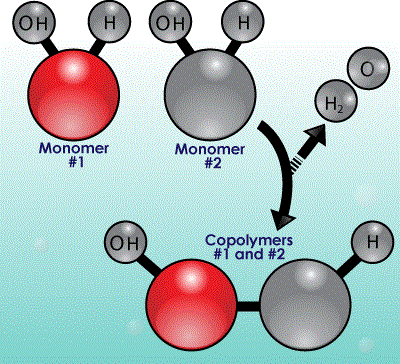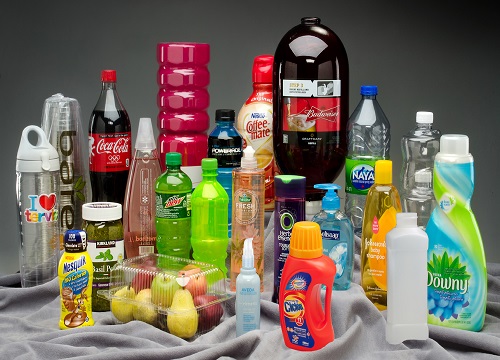What is Plastic made from?

Atomic structure of Plastics
So where do plastics come from … and just what are they?
Plastics are derived from materials found in nature, such as natural gas, oil, coal, minerals and plants.
The very first plastics were made by nature—did you know that rubber from a rubber tree is actually a plastic?
Interest in making plastics arose in the 1800s to replace scarce materials such as ivory and tortoise shell. The first synthetic plastics were derived from cellulose, a substance found in plants and trees. Cellulose was heated with chemicals and resulted in a new material that was extremely durable.
The raw materials for today’s plastics come from many places (some even use salt!), but most plastics can be made from the hydrocarbons that are readily available in natural gas, oil and coal.
What is the Chemistry of Plastics
The chemistry of plastics can be complex, but the basics are straightforward. Think back to your high school science lessons about atoms and molecules (groups of atoms).
Plastics are simply chains of like molecules linked together.
These chains are called polymers. This is why many plastics begin with “poly,” such as polyethylene, polystyrene, and polypropylene. Polymers often are made of carbon and hydrogen and sometimes oxygen, nitrogen, sulfur, chlorine, fluorine, phosphorous, or silicon.
This is why many plastics begin with “poly,” such as polyethylene, polystyrene, and polypropylene. Polymers often are made of carbon and hydrogen and sometimes oxygen, nitrogen, sulfur, chlorine, fluorine, phosphorous, or silicon.
The term “plastics” encompasses all these various polymers.

Plastic for Packaging
Although there are many polymers, plastics in general are lightweight with significant degrees of strength. Plastics can be molded, extruded, cast and blown into seemingly limitless shapes and films or foams or even drawn into fibers for textiles. Many types of coatings, sealants and glues are actually plastics, too.
What is plastic made into?
Plastics are everywhere in our lives – our kitchens, our vehicles, our purses, and even inside our own bodies. Check out the many ways plastics can be found all around you:
- Acrylonitrile butadiene styrene (ABS): Cases for electronics such as computers and monitors
- High impact polystyrene (HIPS): Vending machine cups, food packaging, refrigerator liners
- High-density polyethylene (HDPE) plastic #2: Beverage containers, cleaning product containers, shopping bags, cabling, pipes, wood composites
- Low-density polyethylene (LDPE) plastic #4: Produce bags, flexible food containers, shrink wrap, lining for cardboard, wire coverings, toys
- Melamine formaldehyde (MF): Cookware and dishes, moldings, toys
- Phenolics (PF) or (phenol formaldehydes): Insulation for electronics, lamination for paper, molding alternatives
- Polyamides (PA): Nylon materials, car moldings, fishing line, toothbrushes
- Polycarbonate (PC) plastic #7: Beverage bottles, DVDs and CDs, eyeglasses, traffic lights, lenses
- Polyester (PES): Textiles
- Polyetheretherketone (PEEK): Medical implants, aerospace parts
- Polyethylene terephthalate (PET) plastic #1: Beverage bottles, food film, microwaveable packages
- Polylactic acid (PLA): Biodegradable beverage bottles and dishes
- Polymethyl methacrylate (PMMA): Light diffusers for vehicles, contact lenses, Plexiglas
- Polypropylene (PP) plastic #5: Large and small appliances, food containers, auto parts, pipes
- Polystyrene (PS) plastic #6 :Foam products, food containers, CD and DVD cases, plates and cups
- Polytetrafluoroethylene (PTFE): Coatings for fry pans (Teflon) and water slides
- Polyurethanes (PU): Foam products for furniture and coatings
- Polyvinyl chloride (PVC) plastic #3: Toys, pipes, shower curtains, flooring, windows, food films
- Urea-formaldehyde (UF): Adhesives for wood, casing for electrical switches
